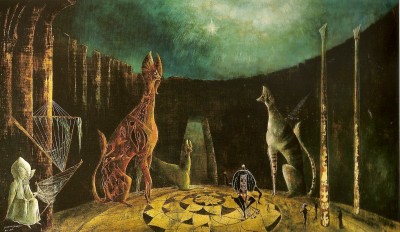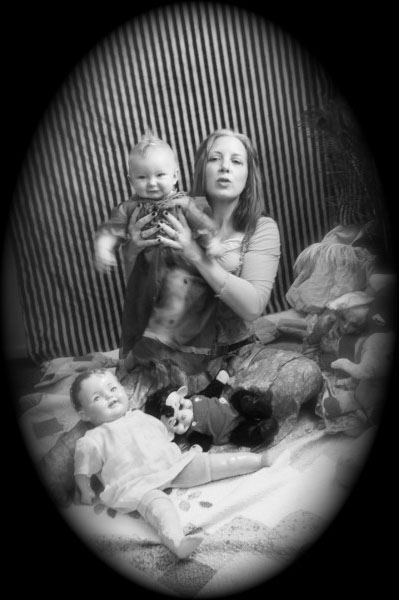Teen Goth
Coilhouse contibutor Angeliska Polacheck hosts a monthly new wave/old school goth night called Exquisite Corpse, in Austin, Texas. She originally posted this exposition into her errant youth as inspiration for this month’s theme: TEEN GOTH. The original posts can be seen in their entirety here and here.

This is Cinamon. I remember seeing her on the very same day, though I didn’t take this photograph of her. I was probably 12 at the time, and as I passed by her on The Drag down by Sound Exchange, the trajectory of my life changed forever. I was completely mesmerized by this vision in black tatters, a gorgeous alien-wraith who seemed like an apparition drifting down a banal sidewalk in the bright Texas sun. She was the most beautiful woman I had ever seen. I stopped and told her how amazing I thought she was, and she was so sweet to me. I’ve held this photo dear for years, a treasured gift from a mutual friend. She was such a huge influence on not only my style, but also for scores of others, (maybe even yours!) – Cinamon was the original inspiration for Neil Gaiman’s Death character from the Sandman series. Her friend Mike Dringenberg drew her years before, and by an odd twist of chance (or fate), this woman unwittingly helped shape the style of scads of wee gothlings. Cheers to you, Cinamon – you continue to inspire and astound!

This was me at maybe 15 or 16? It was for a fashion show at the old Club 404, a legendary big gay bar from back in the day here in Austin. I was total monster-child jail bait, who spent most of my time scampering around in the woods on drugs wishing I wasn’t human, poring over Elfquest and Sandman comics and Storm Constantine’s Wraeththu trilogy. I made my outfit in five minutes out of electrical tape, eyeliner, wire and black tulle. Oh, and a thong. Heaven forbid that should I ever spawn a girl-child as naughty as I was! With any luck, I’ll end up with a Saffy.

(photo by Monte McCarter)
At the tender age of barely 17, I became the armed spokesmodel for FringeWare Review’s book catalogue. This involved posing in my underpants and various getups made of rubber and dollparts with books and guns. Real guns. That’s totally an actual Uzi or Tech-9 or whatever the hell, too. I was super blessed to be part of FringeWare when it was around – it was a strange and magical era.

















